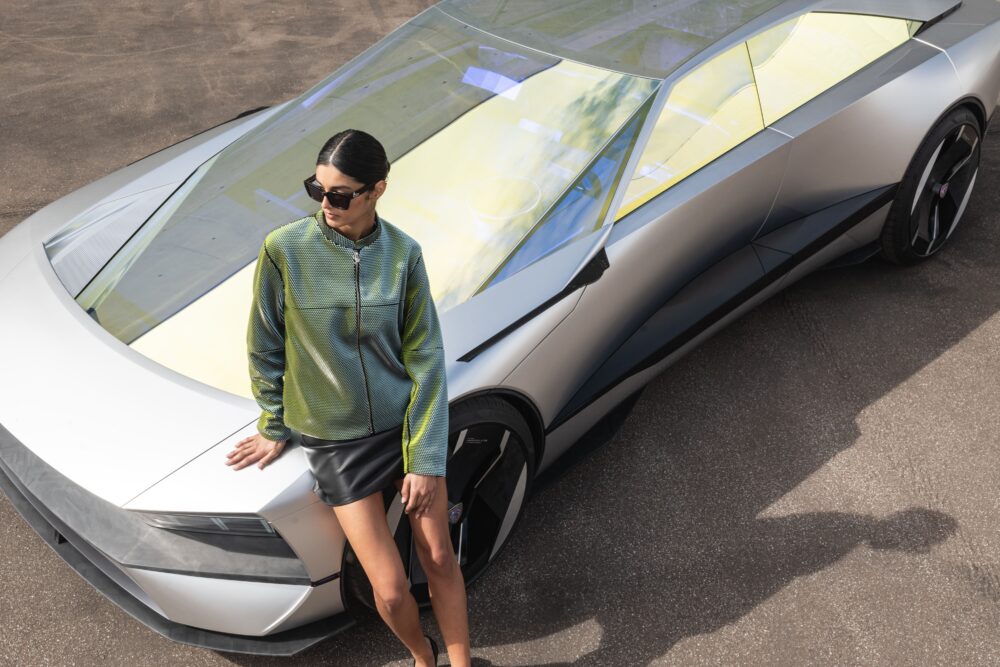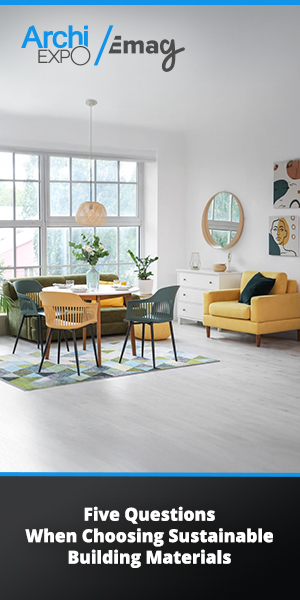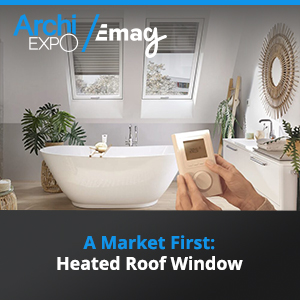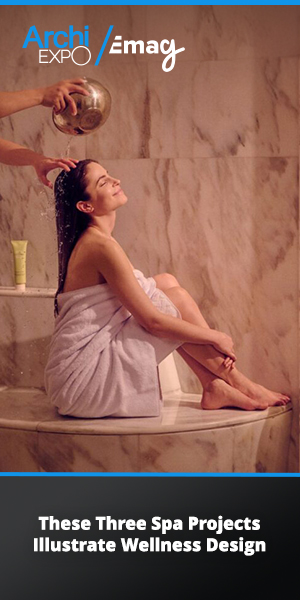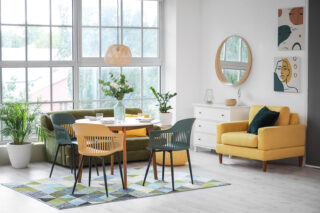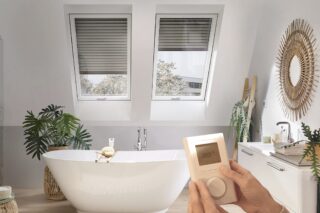In an exclusive interview, Peugeot’s Director of Design Matthias Hossann reveals the INCEPTION CONCEPT. It features eco-friendly materials and innovative technologies like HyperSquare steering controls and a panoramic Skyspace glass surface.
At the 2024 VivaTech exhibition in Paris, Peugeot presented the INCEPTION CONCEPT. This electric vehicle combines fierce exterior design with revolutionary interior features. It boasts a 500 kW motor, accelerating from 0 to 100 km/h in 3 seconds, and aims to reduce Peugeot’s carbon footprint by over 50% by 2030. It’s a preview of the next generation of electric vehicles “BEV-by-design” (Battery Electric Vehicle), set to be commercialized starting in 2025. The brand will display the concept car at the Paris Motor Show in October for another in-person viewing of the Inception’s HyperSquare steering controls and panoramic Skyspace glass surface. In an exclusive interview, Matthias Hossann shares the intricate details behind this new design concept.
ArchiExpo e-Magazine: What was the primary inspiration behind the design?
Matthias Hossann: A concept car is a bit like the haute couture of the automobile industry. There is only one. It’s a laboratory of expression. Today, Peugeot is one of the oldest brands in the world. From a design point of view, this is an opportunity to work with our fabulous heritage while looking ahead. That’s why the design language is called Feline Future—Feline, as our brand image is the lion. Design-wise, it’s the fact of staying in a certain dynamism, a certain feline-ness, a dynamic posture on our vehicles. This dynamism is an integral part of the DNA of the Peugeot brand, and this vision of the future through a hybridization combining technology and a smooth design.
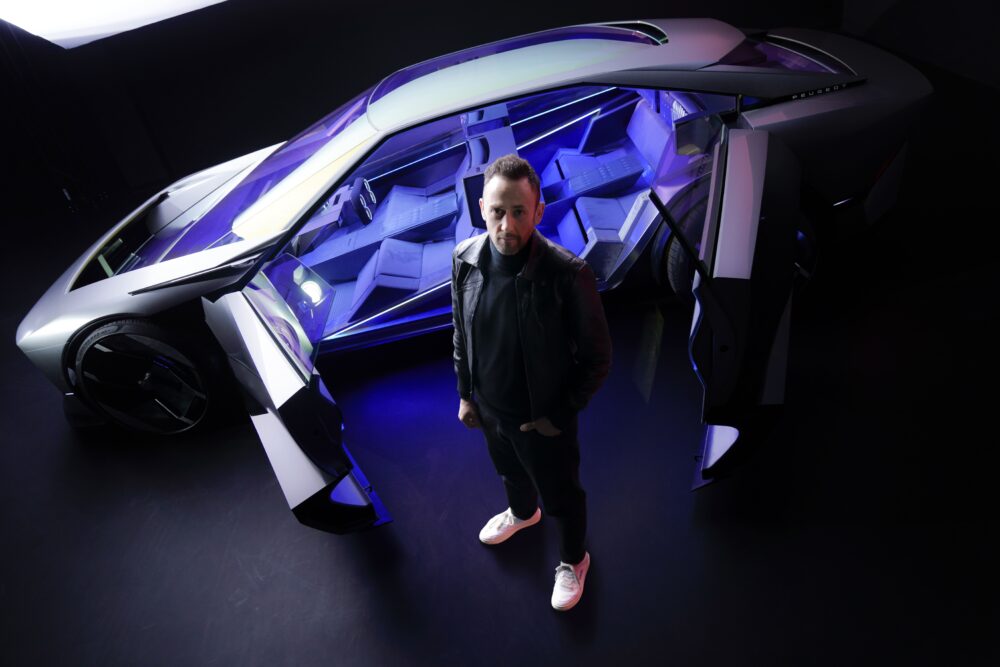
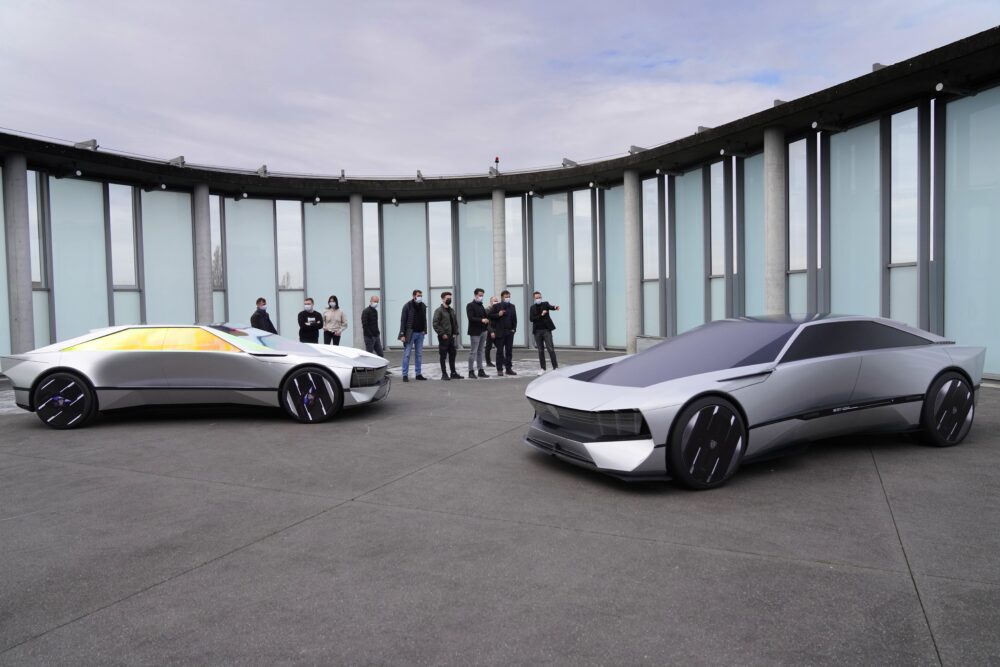
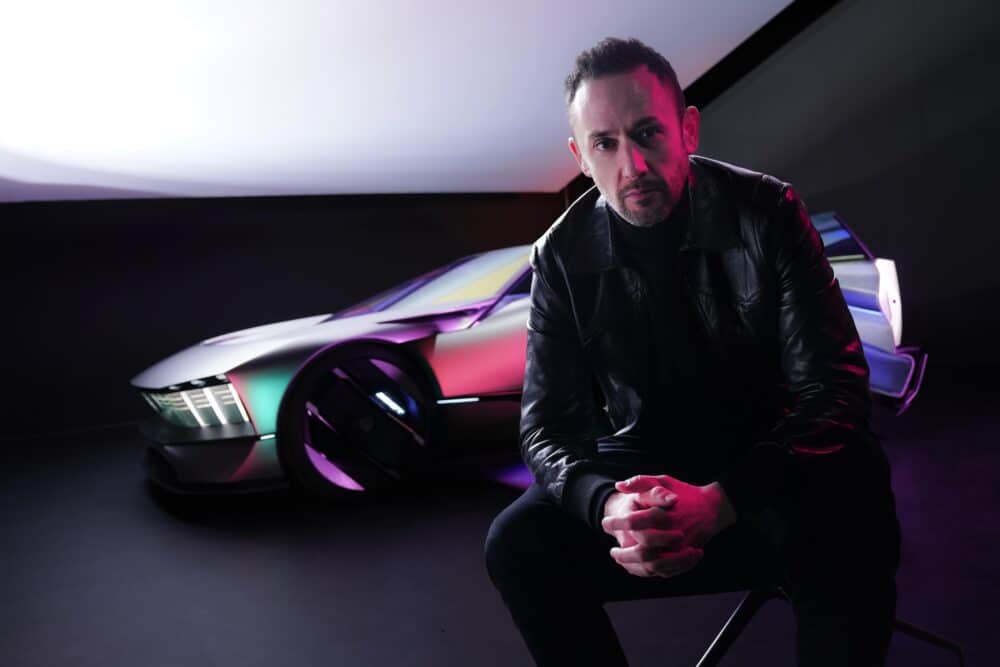
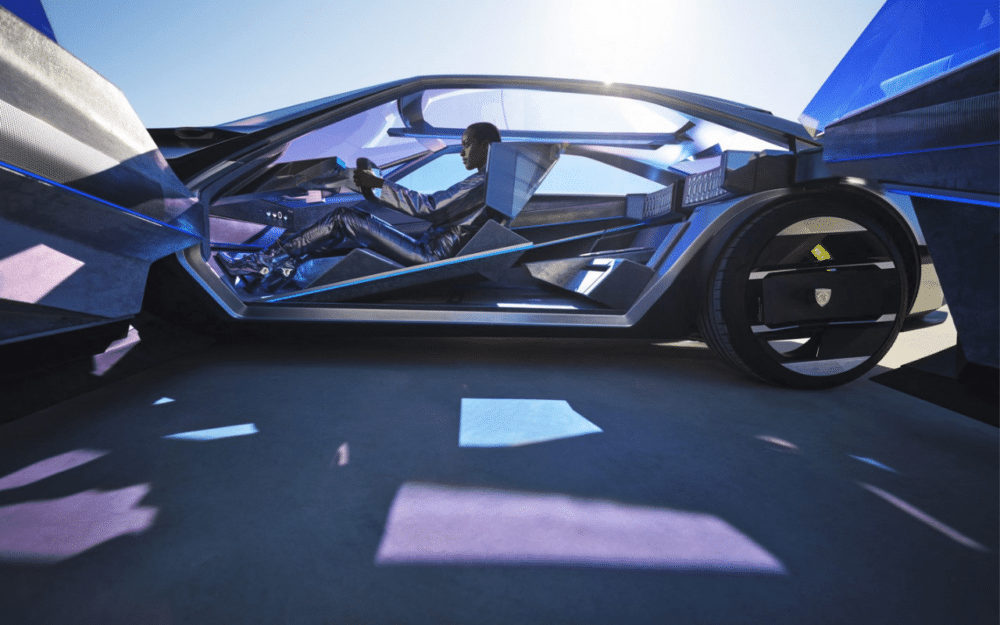
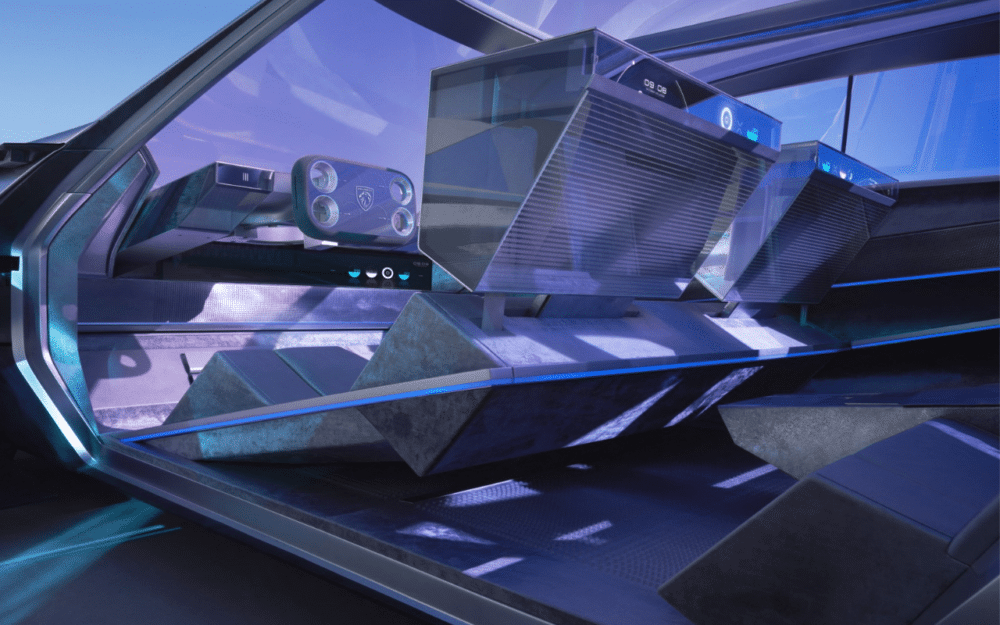
ArchiExpo e-Magazine: How does the Skyspace panoramic glass surface contribute to the driving experience?
Matthias Hossann: Several reasons led to the inclusion of a glazed glass surface, known as the Skyspace. Firstly, as the vehicle is fully electric, the batteries are typically located beneath the vehicle’s floor, necessitating a lower center of gravity. Secondly, from an architectural perspective, there is a push to maximize interior space by minimizing wall presence, prompting the consideration of new perspectives. By integrating glass, occupants experience a novel spatial perception, devoid of the mass traditionally associated with internal combustion engines.
The Skyspace’s rendering, termed multi-chrome, presents an almost golden exterior hue, eliminating the need for additional sun protection layers. Originally developed by NASA to mitigate solar radiation, this treatment reduces internal heat accumulation, minimizing reliance on climate control systems and liberating space within the vehicle. Moreover, the decision to emphasize visual impact on the glass surface, rather than the body, offers a sustainable approach to design while providing a fresh interpretation of vehicle aesthetics.
From an architectural standpoint, these choices echo trends observed in contemporary architecture, leveraging materials inspired by architectural practices to redefine automotive design. Additionally, the interplay of light on the Skyspace’s exterior hue influences the internal color palette dynamically, reflecting the surrounding environment rather than imposing a static color scheme on occupants. This approach not only enhances the vehicle’s aesthetic appeal but also contributes to a luminous, uplifting onboard experience, highlighting a departure from conventional automotive design paradigms.
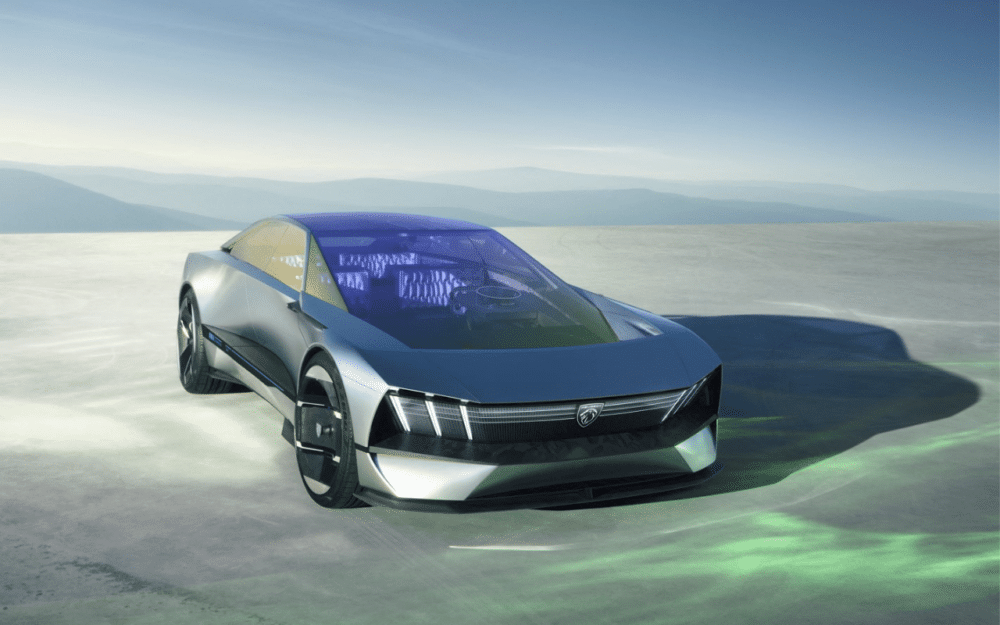
ArchiExpo e-Magazine: Can you walk us through the key futuristic technologies integrated into the i-Cockpit?
Matthias Hossann: Peugeot has prioritized interior design for over a decade, introducing the i-Cockpit concept 12 years ago. This innovative architecture features a small steering wheel and information display positioned above it, enhancing both information accessibility and driving dynamics. With 12 million satisfied drivers, Peugeot aims to envision the future of the i-Cockpit, anticipating changes in vehicle design. In collaboration with HyperSquare technology, which replaces mechanical steering connections with electrical ones, Peugeot revolutionizes the driving experience. HyperSquare reduces steering effort drastically, allowing for sharper turns with minimal wheel rotation, significantly enhancing agility and driving pleasure. This technological leap echoes the transition from mechanical to assisted steering, underscoring its transformative impact on driving dynamics. Additionally, Peugeot explores various design approaches to showcase HyperSquare aesthetically, culminating in the HyperSquare steering wheel, a distinctive and iconic driving interface.
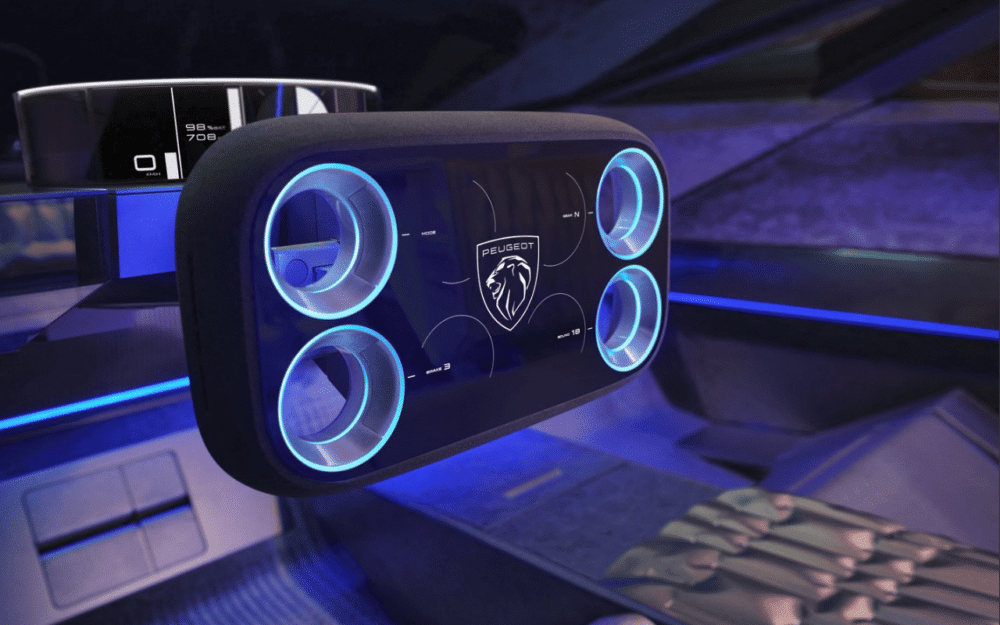
ArchiExpo e-Magazine: Could you elaborate on the Hypersquare steering control system?
Matthias Hossann: The steering wheel of the HyperSquare technology is no longer traditional but unique to this innovation. The rectangular shape, with rounded corners, was chosen for its universality, accommodating various driving postures and hand positions. Through testing, it proved to be the most versatile option. The four circles integrated into the design serve as thumb rests and hubs for vehicle connectivity, revolutionizing the i-cockpit experience. This compact steering wheel not only enhances onboard accessibility but also optimizes information visibility, promising a tangible improvement for future vehicle interiors. Scheduled for implementation in mass-produced vehicles by 2026, this innovation represents a significant milestone in Peugeot’s design evolution. Customer feedback and dynamic testing play pivotal roles in refining this technology, ensuring a seamless transition for drivers accustomed to conventional steering systems. The intuitive handling of HyperSquare reflects its transformative potential, offering a lighter and more agile driving experience. As Peugeot navigates this revolutionary shift, customer adaptation remains a key focus, underscoring the importance of a comprehensive approach to integrating this new steering interface.
READ more about the HyperSquare and Steer-by-Wire technology in an interview with Product Director Jérôme Micheron in an article published in our sister media outlet DirectIndustry e-Magazine.
ArchiExpo e-Magazine: How does the 360-degree flexible screen contribute to a more immersive driving experience?
Matthias Hossann: The HyperSquare serves as the new driving device, featuring a cockpit architecture where information is displayed on a curved 360-degree screen above it. This innovative screen not only provides driving-related information but also allows for interaction with pedestrians and other vehicles, aiming to strengthen the bond between the vehicle and its surroundings. Peugeot is exploring the potential of the 360-degree screen to foster connectivity between objects and individuals, envisioning a future where vehicles forge deeper connections with their environment. Moreover, the immersive seats in the INCEPTION CONCEPT redefine traditional car seating, prioritizing comfort and space optimization. Peugeot seeks to transform car seats into multifunctional pieces of furniture, integrating intelligent storage solutions and easily recyclable materials. By externalizing technologies like inflatable pads and incorporating screens for air conditioning and vehicle functions, Peugeot reimagines car interiors as dynamic living spaces, embracing sustainability and innovation in design.
ArchiExpo e-Magazine: What did you consider when designing the immersive seats with HDMI screens?
Matthias Hossann: At Peugeot, we prioritize comfort without compromising on support; the seats are ergonomically designed, ensuring passengers feel secure without sacrificing comfort. Despite their geometric formalization, they offer remarkable comfort, creating a pleasant surprise for passengers. Additionally, the inclusion of glass elements at the back of the seats adds a technological dimension, balancing the visual appeal with modern technology. When seated in the second row, passengers experience a harmonious blend of comfort and technology, avoiding a “cold” atmosphere.
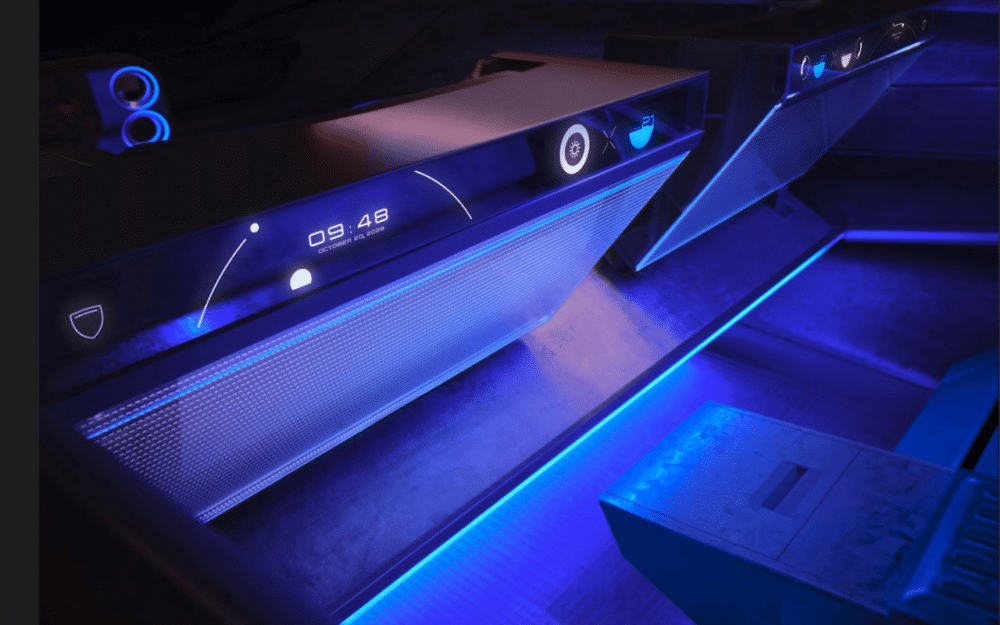
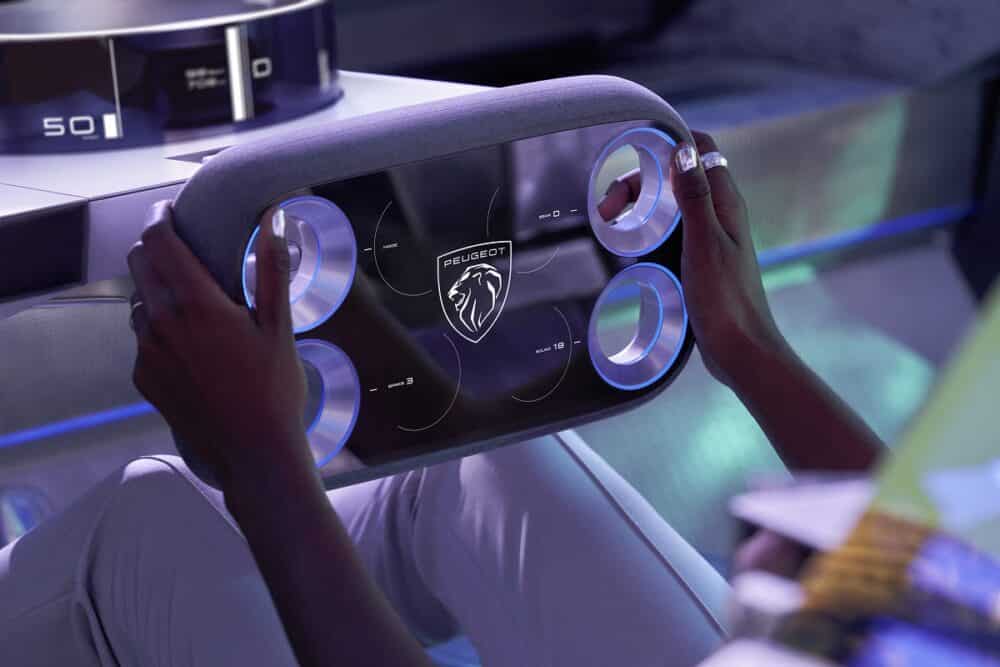
READ how Peugeot began using Stratasys’ 3DFashion technology in the interior of its EVs in an article by our sister publication DirectIndustry e-Magazine.
